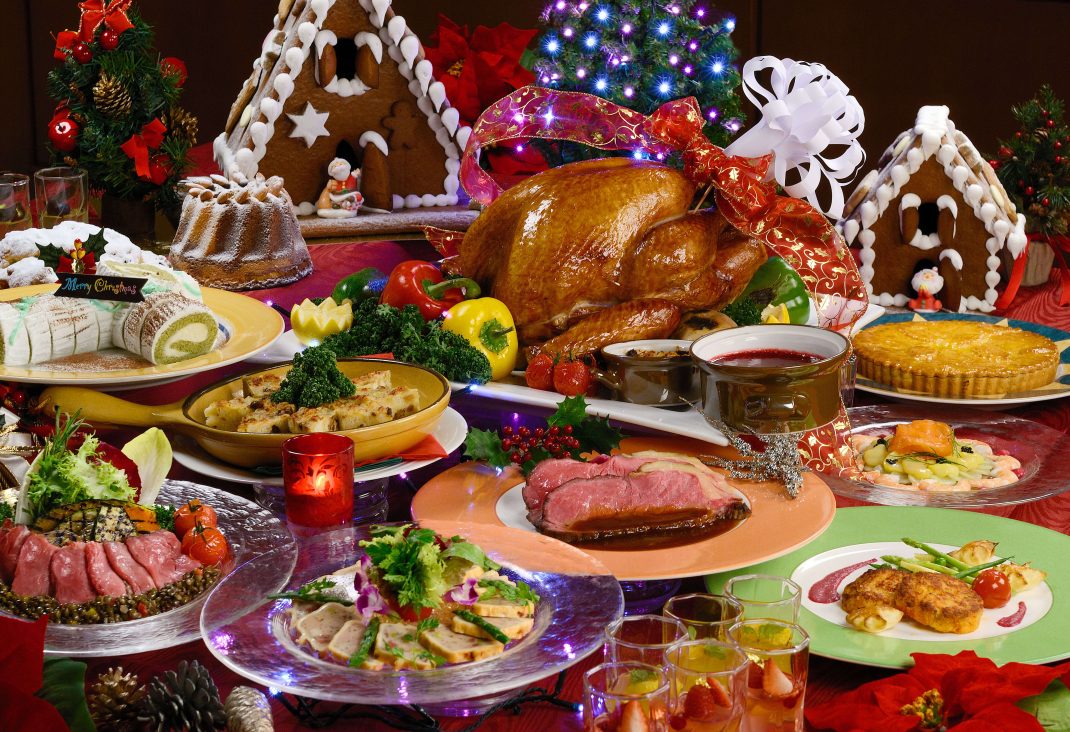FOOD AND DRINK
Contemporary Turkish cuisine reflects its Ottoman heritage. Popular dishes such as kebap (kebab) and pilav (rice) derive from the traditions of nomadic Central Asian tribes and other civilizations that have swept through Asia Minor. An Assyrian cookbook found during recent excavations shows that similar dishes have been served for thousands of years. Fans of Greek, Armenian, and Middle Eastern food will recognize favorite dishes on Turkish menus, but these neighboring traditions have been reinterpreted and recombined to forge a unique cuisine.
Although Turkish food varies from region to region, some staples will turn up in just about any Turkish kitchen: yogurt, olive oil, bread, rice, lamb, spices, and, above all, fresh produce. Pre-packaged and processed food items are rarely used.
Turks typically start the day with a breakfast of freshly baked bread, thick honey, jam, olives, cheese, a soft-boiled egg, sliced tomatoes, and cucumbers, complemented by strong Turkish tea. Many pansiyons (small hotels) offer breakfast for a small sum or free of charge.
PLEASE PASS THE KEBAP
Sure, the meaty kebap was a treat at first, but after 75 identical meals in a row, you’d rather eat glass. Aside from upscale restaurants, which often offer the same tired menu for Trump-ish prices, your best bet for a wider variety of cheap Turkish cuisine is the lokanta (sometimes lokan- tas). These restaurants lie off the tourist path and cater mostly to working men. Their style is usually cafeteria-like: seven or eight dishes will have been prepared for the day, of which two or three are meat-based. The rest are mainly vegetarian (though some may contain unexpected pieces of meat). Everything comes in sized portions and is extremely cheap ($1-2 per serving). For real sampling, request a half-serving. The only drawback to lokantas is that women may feel a tad uncomfortable joining the rows of male patrons. Some lokantas have an “aile” section upstairs, reserved for families and single women, which is usually much cleaner and airier than the men’s section. In any case, don’t worry about unwanted social contact in the lokanta. People usually eat quickly and with no conversation, knowing they soon have to head back to work.
APPETIZERS AND ACCOMPANIMENTS
Lunch and dinner often begin with mezes, hot or cold appetizers which can be a meal in themselves. Meze come in many forms, from simple beyaz peynir (feta cheese) to complex vegetable dishes. Most menus feature dolma, a kind of meze whose name comes from the verb meaning to fill or to stuff (not coincidentally the same verb that gives the dolmuş its name). Dolma include peppers, grape leaves, and tomatoes stuffed with rice or meat. İmam bayıldı (literally, “the priest fainted”) is a stuffed egg plant dish. Börek is another common meze item a flaky pastry either filled with kıyma (meat), peynir (cheese), or ispnak (spinach). Börek can be sigara (long crispy fried rolls which resemble cigarettes), su (lasagna-like noodles with cheese filling), or normal (flaky pastry dough with tilling).
Turkish salads are rarely made with lettuce. More common salad varieties include çoban salatası (chopped tomato and cucumber salad), patlıcan salatası (pureed eggplant), yeşil salata (green salad, also called mevsim salata the closest you’ll come to an American-style side salad), cacık (thin yogurt with cucumbers, often spiced with garlic), and Amerikan salatası an ill-named mixture of peas, carrots, potatoes, and mayonnaise.
Çorba (soup) changes with the seasons. Thicker soups like mercimek çorbası (lentil soup) and domates çorbası (tomato soup with shredded kaşar cheese) are a mainstay in the winter months, while cool, minty yogurt soups dominate summer menus. Inebriated Turks coming back from a wild night on the town often head straight to the nearest çorba joint to have a piping hot bowl of kırmızı mercimek çorbası (red lentil soup) or işkembe çorbası (tripe soup). Lord knows stomach always tastes better after a good night of drinking.
AAAHH, MEAT
Ubiquity, thy name is kebap. Almost every meal in Turkey involves meat, and meat in Turkey is usually lamb. Many restaurants specialize in köfte (small, spiced meatballs), mantı (tiny meat-filled ravioli), or other meat dishes, and the varieties of this staple are limitless. Coastal Turkey travel merits at least a stop at one of the fish restaurants. Selections vary according to season, region, and the catch of the day; diners choose their balık (fish) from the display. Eating fish requires nimble teeth: it’s served whole, with bones, head, fins and tail.
VEGETABLES AND FRUIT
The secret ingredient in Turkish cuisine is tasty, fresh- from-the-farm produce, grown (in-season only) along the western and southern coasts. To find the best fruits and veggies available, join the basket-toting women at any of the markets listed in this book. Carefully wash all produce with bottled or
boiled water before taking a bite. An even better rule of thumb is only to eat peel- able fruit. Take the plunge and treat your taste buds to a Turkish favorite: karpuz (watermelon) with beyaz peynir (feta cheese).
SWEETS
Save room for dessert, which is almost always sticky and sweet. Highlights include baklava (a flaky’, sweet nut pastry, usually with pistachio), kadayıf (shredded pastry dough filled with nuts and drenched in syrup), tavukgöğsü (a creamy sweet made of pulverized chicken fibers), and helva (sesame paste). The dondurma (ice cream) manages to be chewy and sticky and frozen all at the same time. Keep an eye out for pudding shops, and sample the aşure (fruit pudding), sütlaç (rice pudding), krem ¡caramel (crème caramel), and profiterol.
STREET FOOD
Street food can be a cheap and tasty alternative to restaurant dining, not to mention a great way to experience authentic Turkish cuisine, particularly if you’re on the go. The food varies with the season and region, and there is a broad range of quality and freshness. Baked goods like simit (a sesame bread ring), poğaça (flaky pastry’ often served with a layer of cheese), and börek are safe, as are most dried fruit and nuts. However, buying ice cream on the street may be a bad idea. As always, be cautious, and remember that your stomach may not be used to the benign bacteria found in Turkish food.
Besides the snacks sold on Atatürk Caddesi throughout the nation, Turkey offers the budget traveler a delicious array of inexpensive fast food. Instead of a Big Mac (although they are available), try gözleme, a crêpe-tortilla hybrid, filled with cheese, potatoes, spinach, or meat; kokoreç, fried, chopped tripe (a cow’s stomach lining), usually in sandwiches with tomatoes; lahmacun, often called Turkish pizza, a thin rounded bread topped with ground spiced meat; tost, a grilled cheese sandwich; or kumpir, baked potatoes piled high with toppings.
DRINKS
When in Turkey, do as the Turks do and always drink only bottled or puri¬fied water. Most establishments use safe water when preparing food, so there is lit¬tle cause for concern, but be sure to do the same yourself. It is also a good idea to keep your mouth closed in the shower.
A half cup full of pure caffeine, kahve (Turkish coffee) can be ordered sade (black), orta (medium sweet), or şekerli (very sweet). Despite the fame garnered by Turkish coffee, Turkey’s national drink remains, without a doubt, çay (tea). Served in small, hourglass-shaped glasses, çay is strong, black, and everywhere. Elma, çayı (apple tea), which tastes like warmed apple juice, is an alternative to conventional Turkish tea’s strong brew.
Ayran, a salty yogurt drink, makes appearances with meat dishes and in hot weather. Meyva suyu (fruit juice), maden suyu (mineral water), and cola (Coca- Cola) are also common. Sahlep, available only in winter, is a warm, sweet, milky* drink made of pulverized orchid root and served with cinnamon.
Alcohol, though widely available, is frowned upon in the more conservative parts of the country. Restaurants that post, içkisiz in their windows have none, but those with içkili are taking special pains to announce alcohol’s availability. Bira (beer) is ever-popular: Efes Pilsen and Tuborg are the leading brands the former is better. The best domestic white wines are Çankaya, Villa Doluca, and Kavaklıdere, made in Cappadocia, while Yakut and Kavaklıdere produce the finest red. Ice cold rakı, a clear anise seed liquor that tastes like licorice, is Turkey’s national alcohol. Mixed in equal parts with water, which clouds it, rakı is similar to Greek ouzo, but even stronger. Istanbul’s local specialty is balyoz (sledge hammer/wrecking ball). Getting wrecked will not be difficult: balyoz consists of rakı, whiskey, vodka, and gin mixed with orange juice. Bottoms up.



Leave a Reply